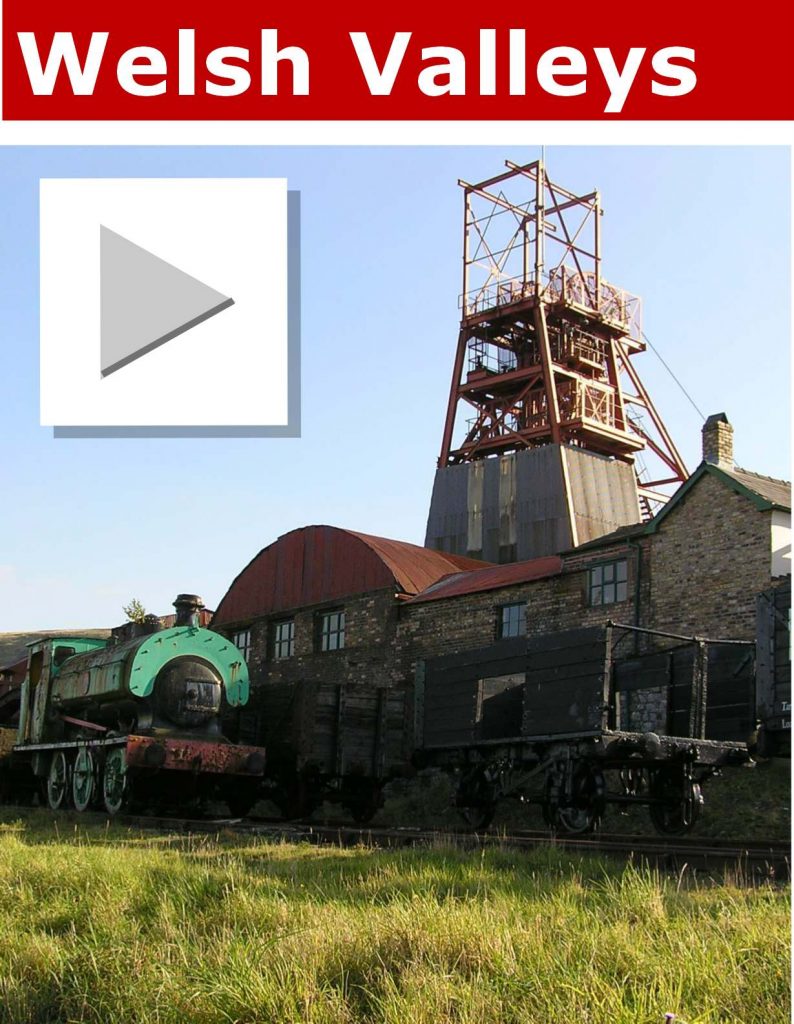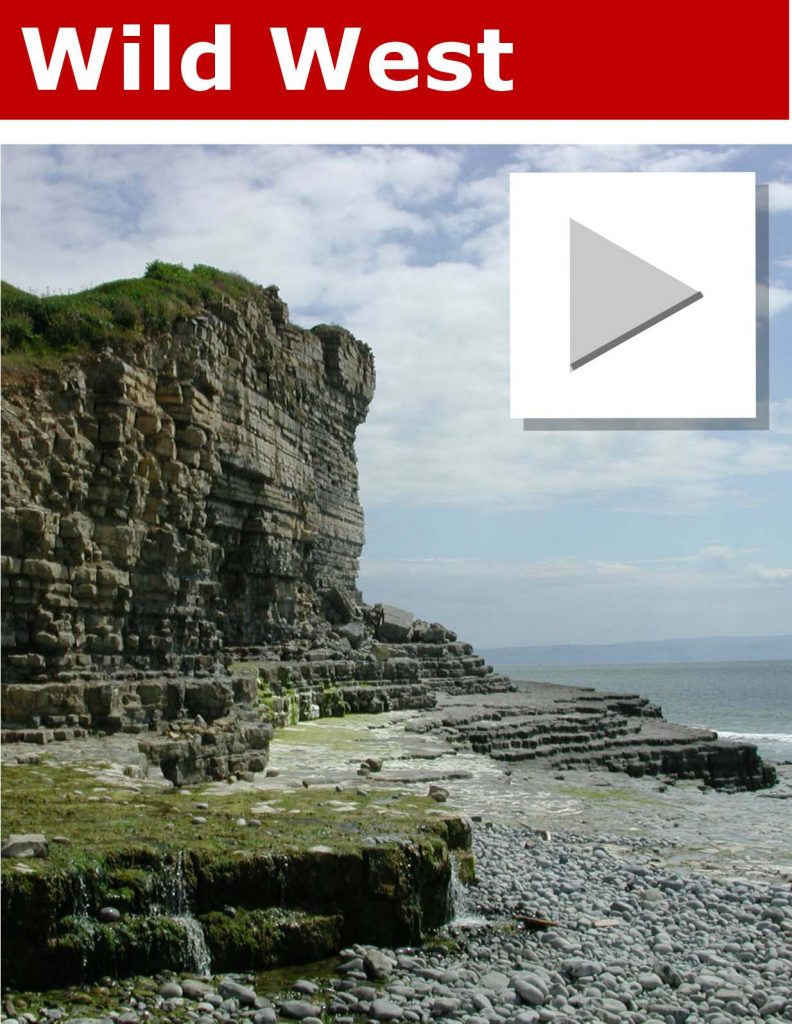10. Criccieth Castle
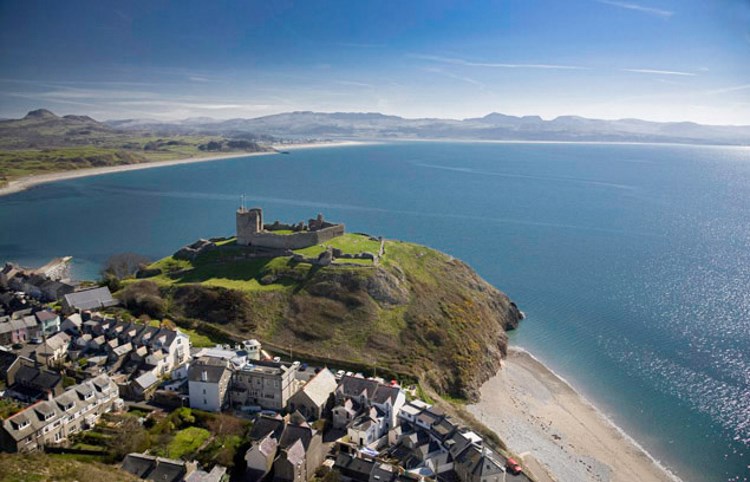
photo/cadw
Resting atop a headland jutting out into Tremaddog Bay, Criccieth Castle demonstrates the influence that King Edward I had on Welsh fortress construction. Built by Llywelyn the Great in the late 13th century, the design included many features of Edwardian castles, including an outer wall, outward-facing arrow slits and murder holes in passageways. The castle changed hands between the Welsh and English until the 15th century when it was burned during the last great Welsh rebellion. Visitors to Criccieth can wander through the ruins and explore exhibits about the history of Welsh castles.
9. Carreg Cennen
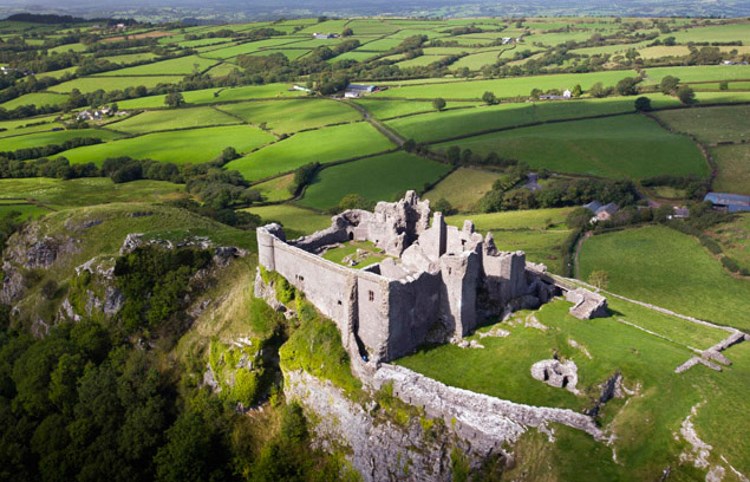
photo/cadw
Perched on a rocky limestone hill in the town of Llandeilo in Carmartenshire, Wales, Carreg Cennen Castle is prized for the views it offers as much as for its ancient history. The 12th-century Welsh structure was built by Rhys of Deheubarth and was rebuilt in the 13th century by John Giffard on behalf of Edward I. Although much of the castle was destroyed during the Wars of Roses, the ruins are well worth a visit. Visitors who climb their way to the hill’s summit are rewarded with breathtaking views.
8. Cardiff Castle
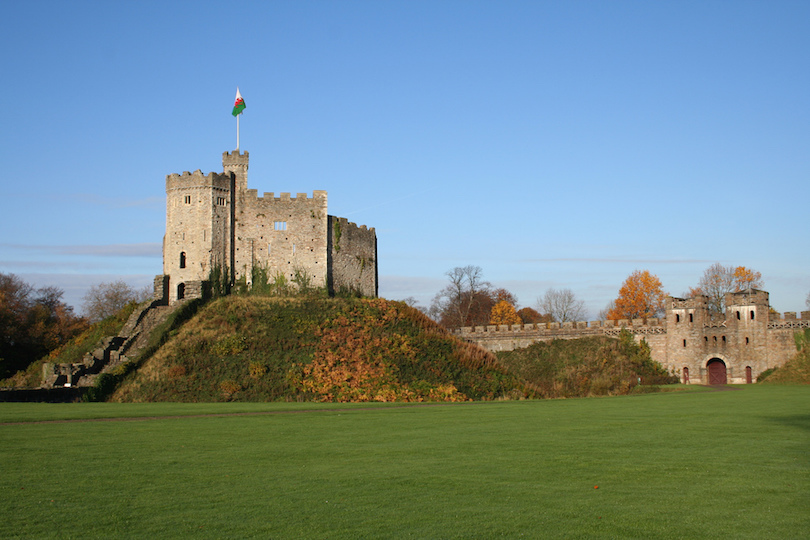
flickr/Martin
Built on the banks of the Taff River, Cardiff Castle has a history that dates back to Britain’s Roman occupation. Over the centuries, it has been transformed into a Norman keep, a medieval fortress and a Gothic residence. In the 1800s, the third Marquess of Bute turned the structure into a fairytale-like castle in the Gothic Revival style. Today, the castle is operated by the city of Cardiff as a tourist attraction. Visitors can tour the castle’s sumptuous apartments, explore the Firing Line regimental museum and roam the beautifully landscaped parks around the castle grounds.
7. Raglan Castle
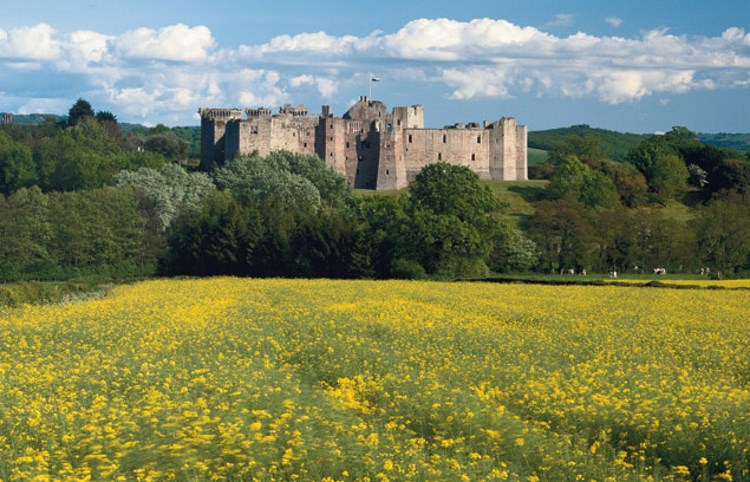
photo/cadw
Raglan Castle in the county of Gwent was one of the last medieval castles in Wales, and the structure demonstrates how Britain’s fortresses eventually gave way to palaces. Although it was designed for defense when construction began in 1435, attention was also paid to human comfort with an array of luxurious apartments built around a scenic courtyard. A climb to the top of the Great Tower offers views of the moat below and the surrounding countryside. Visitors can explore the cellars, which were built to hold hundreds of casks of wine, and can view medieval wood carvings still visible on the castle’s long gallery.
6. Pembroke Castle Where to Stay
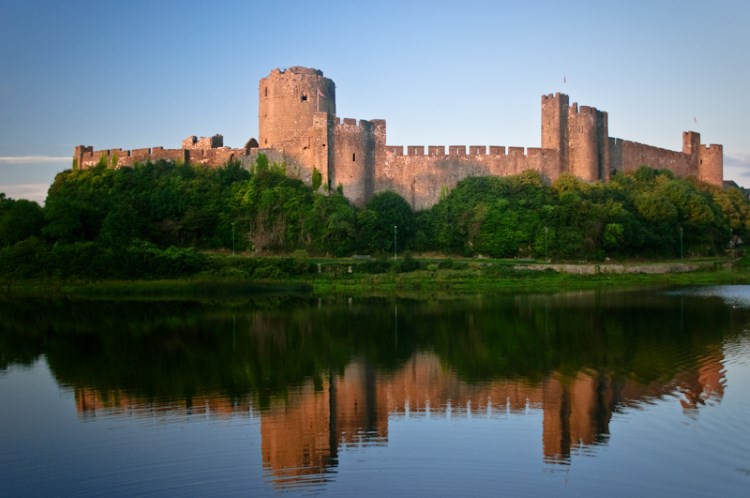
wikipedia/JKMMX
Located in the county of Pembrokeshire in Southeast Wales, Pembroke Castle is the largest privately owned castle in Wales. It’s also one of the oldest and best preserved. Construction dates back to 1093 when the Earl of Shrewsbury took control of the town from the Welsh. Famed as the place where Henry VII was born, Pembroke began to fall into decay in the 17th century but was fully restored during the early 1900s. Open to the public, the castle features staged tableaux that depict events in the castle’s history, battle re-enactments and falconry displays.
5. Caerphilly Castle Where to Stay
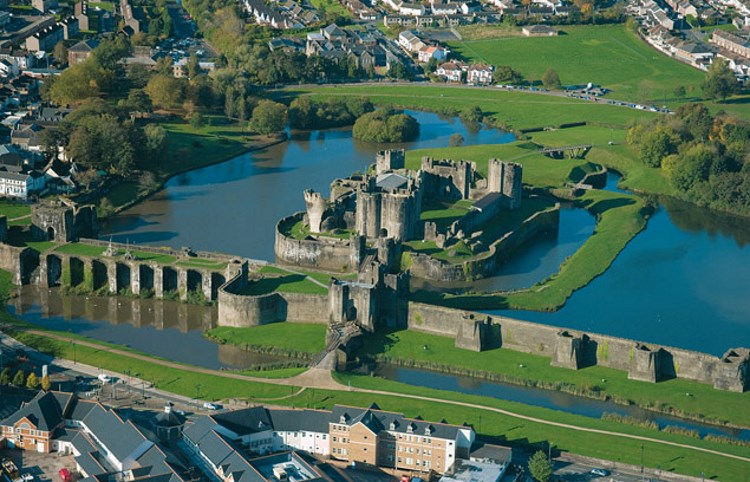
wikipedia/Cadw
Situated on an island on a massive estate in the county of Gwent, Caerphilly Castle is considered the first true concentric castle built in Wales. The inner ward with its rounded corner towers is surrounded by an outer wall with an attached guardhouse. Construction of the fortress began in 1268 by Earl Gilbert de Clare, who built the castle on the site of an ancient Roman fort. Although stone from the castle was later taken to build homes in the region, Caerphilly was restored by a coal baron during the Victorian Era.
4. Beaumaris Castle Where to Stay
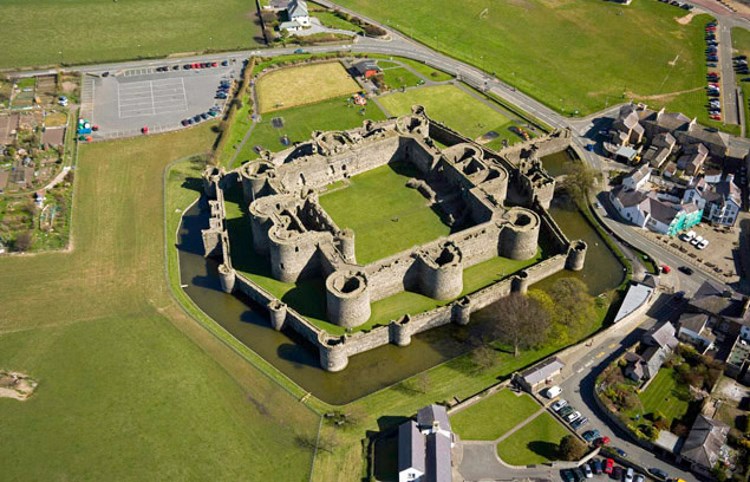
wikipedia/Cadw
King Edward I and his favored architect James of St. George had perfected the art of castle building by the time they began construction of Beaumaris Castle in 1295. Located on the Isle Anglesey in the county of Gwynedd, the beautifully designed concentric castle features a moat connected to the sea, round towers on every corner and staggered entrances and portcullises between the inner ward and outer wall. Although the inner apartments of the castle were never constructed, the castle remains an imposing sight. Visitors are free to explore the grounds and wander through passages in the walls.
3. Conwy Castle Where to Stay
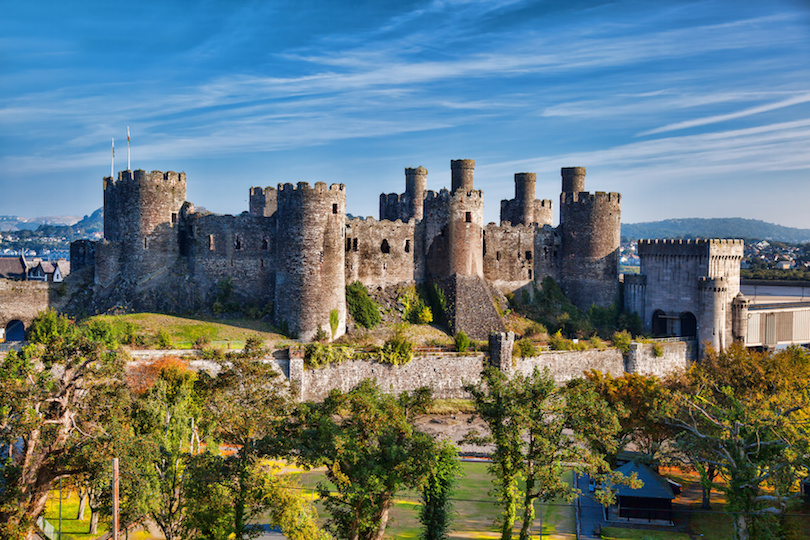
Located in the picturesque town on Conwy on the North Coast of Wales, Conwy Castle was built by King Edward I between 1283 and 1289. The castle is considered one of the finest works by architect James of St. George. Built to take advantage of its location on a rocky hill on the banks of the Conwy Estuary, the well-preserved castle features two fortified gateways, eight gigantic towers and massive great hall. Knowledgeable guides offer one-hour tours that take visitors from the castle’s royal chambers and chapel up to the top of the battlements.
2. Harlech Castle
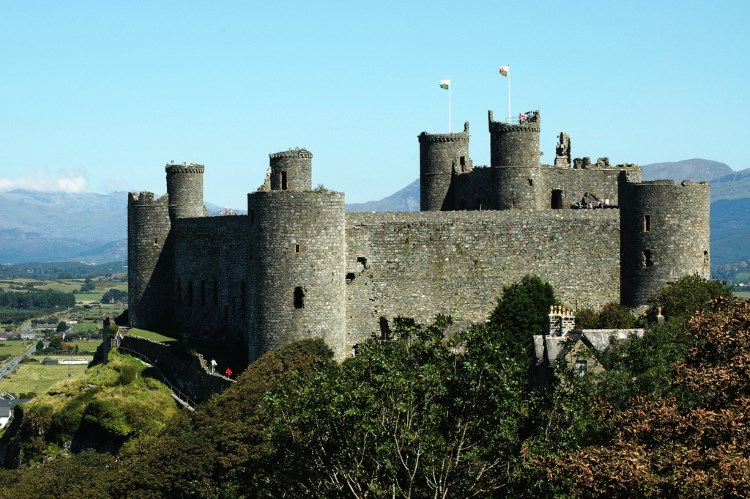
flickr/A Roger Davies
Built on the summit of a 60 meter (200 foot) high hill overlooking Cardigan Bay and the Llŷn Peninsula, Harlech Castle may be marked by centuries of battle and decay, but it’s still one of the most popular castles in Wales. Built for Edward I in 1283, architect James of St. George took advantage of the site’s sheer cliffs on the northern and western boundaries to strengthen the castle’s fortifications. The castle was attacked almost as soon as it was completed and served as a fortress well into the 1600s. Today, visitors can roam the castle ruins and enjoy one of the finest views on the Cambrian coast.
1. Caernarfon Castle Where to Stay
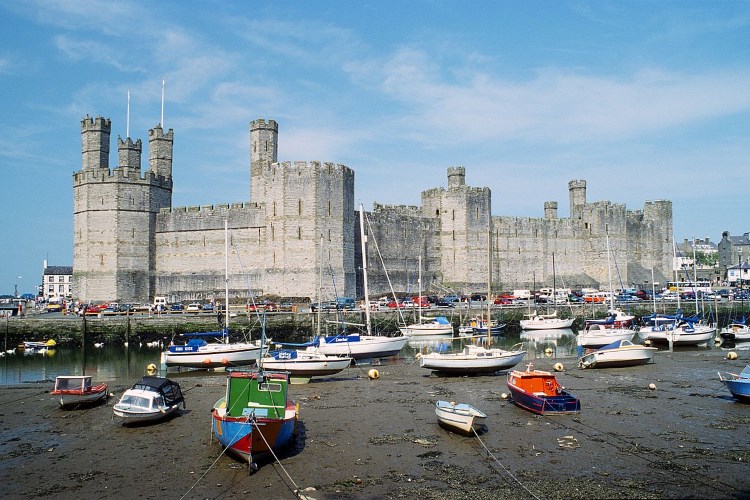
wikipedia/Herbert Ortner
Located on the mouth of the River Seiont in the town of Caernarfon, Caernarfon Castle is beautiful example of the Edwardian style of castle. Designed by the era’s premier architect James of St. George, construction of the castle began in 1283 with the building of a huge outer wall that encircled the entire settlement, much of which still stands today. A series of towers and gates built along the castle’s inner wall offered added protection. King Edward’s son was born in Caernarfon and was dubbed the Prince of Wales, a title that the heir to the throne has been awarded ever since.



